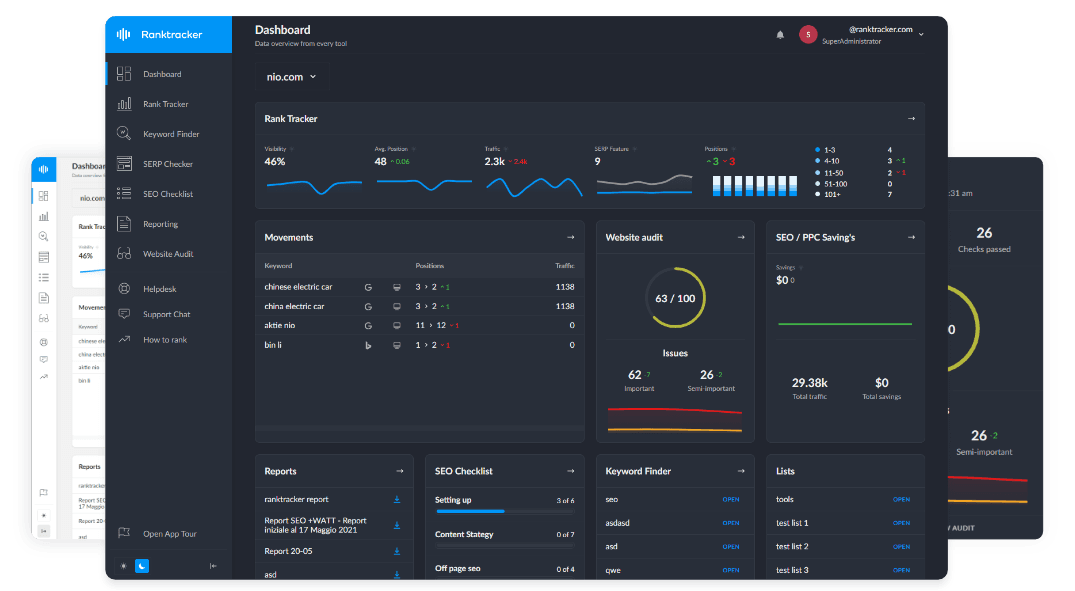Intro
Running a business can feel like juggling too many tasks. You’re managing operations, keeping up with tech trends, and trying to market your services. It’s easy to feel overwhelmed when so much depends on growth and efficiency.
Here’s the good news: the right tools and strategies can make life easier. Managed IT services help create dependable systems while effective marketing attracts loyal customers. This blog will show you how combining these two approaches can drive sustainable growth without straining your budget.
Keep reading for clear solutions that work!
Role of Managed IT Services in Scalability
Managed IT services ensure operations remain efficient as your business expands. They also assist in addressing challenges associated with growth.
Flexible and scalable infrastructure
Cloud computing offers businesses room to grow without major risks. It allows companies to increase storage, bandwidth, or software access as their needs change. Small operations can operate on a larger scale without a heavy upfront investment in IT infrastructure.
"An adaptable system grows on demand without exceeding budget limits." IT services minimize downtime by making upgrades and changes straightforward. Partnering with a trusted MSP like Compeint ensures that businesses can scale infrastructure smoothly while maintaining performance and security. This flexibility supports growth strategies and keeps daily workflows effective. Let’s explore how automating tasks saves time next!
Automation of routine tasks
Managed IT services simplify repetitive tasks. Automated software updates, data backups, and system monitoring run in the background without human effort. This saves time while reducing errors caused by manual work.
Companies using automation enjoy faster workflows with fewer disruptions. Tasks like generating invoices or managing IT tickets can be addressed instantly through pre-set systems. By cutting down on tedious processes, businesses can focus more energy on growth strategies tied to Marketing Approaches for Business Growth.
Enhanced cybersecurity and risk management
Strong cybersecurity measures protect businesses against growing threats like ransomware, phishing, and data breaches. Reliable IT services monitor systems 24/7 to detect vulnerabilities before they become costly problems. Multi-factor authentication, firewalls, and regular software updates reduce risks significantly.
Risk management frameworks identify weak points across networks and operations. Cloud storage with encryption ensures sensitive data remains secure from hackers. With these protections in place, companies can focus on growth without constant concerns about disruptions or attacks.
Predictable IT spending for better financial planning
Fixed monthly fees for managed IT services help businesses plan budgets effectively. They remove unexpected expenses related to hardware failures or urgent repairs. Transparent pricing structures make financial forecasting easier and align with operational goals.
The All-in-One Platform for Effective SEO
Behind every successful business is a strong SEO campaign. But with countless optimization tools and techniques out there to choose from, it can be hard to know where to start. Well, fear no more, cause I've got just the thing to help. Presenting the Ranktracker all-in-one platform for effective SEO
We have finally opened registration to Ranktracker absolutely free!
Create a free accountOr Sign in using your credentials
Transitioning from break-fix models to preventative IT support minimizes unpredictable costs. Businesses allocate resources with confidence, directing funds to critical areas. This approach improves cash flow management and supports growth initiatives without unforeseen disruptions.
Strategic Marketing for Business Growth
Smart marketing helps businesses grow by attracting customers and keeping them hooked—read on to see how it works.
Data-driven marketing strategies
Marketers use data to make more informed decisions. Customer behavior, preferences, and purchase histories guide campaigns. These insights identify what is effective and what is not.
Businesses can focus on the right audience at the right time with accuracy. Partnering with experienced agencies such as Jumpfactor Marketing can help transform raw customer insights into high-converting digital strategies through SEO, PPC, and marketing automation.
Studying analytics assists in planning more effective strategies. For example, analyzing trends from platforms like Google Analytics or CRM tools identifies patterns swiftly. Small adjustments based on this information often lead to higher engagement rates or better customer retention.
Enhancing customer acquisition and retention
Data-driven marketing establishes a strong foundation for attracting and retaining customers. Making good use of customer data helps identify patterns, preferences, and purchase behaviors. This enables companies to target specific demographics with customized offers or promotions.
Retaining customers involves building trust through consistent quality and communication. Loyalty programs, personalized email campaigns, and excellent IT support nurture long-term relationships. Satisfied customers often become brand advocates who contribute to business growth organically.
Building strong brand awareness and loyalty
Consistent messaging builds trust. Customers connect better to businesses that maintain clear and authentic communication. Managed IT services can assist by keeping your digital platforms dependable and safe, ensuring uninterrupted customer interactions.
Appealing content fosters loyalty over time. Personalized campaigns, supported by data insights, create stronger emotional ties with your audience. Protected systems safeguard sensitive customer data, reinforcing trust while encouraging repeat business.
Integrating Managed IT Services and Strategic Marketing
Technology fuels marketing efforts, making tasks simpler and quicker. Data bridges gaps between teams, turning scattered plans into unified actions.
Leveraging technology to streamline marketing efforts
Smart tools simplify marketing tasks, saving time and effort. Automation software manages email campaigns, social media posts, and customer follow-ups with accuracy. These tools maintain consistent messages while giving teams more time for creative strategies.
Data analytics platforms offer detailed insights into buyer behavior. Businesses can track trends, assess campaign success, and recognize gaps in real time. Reliable IT infrastructure ensures these systems function efficiently without interruptions or data loss. Integrating analytics connects effectively with the next critical step: using numbers to align IT goals with marketing objectives.
Using analytics to align IT and marketing goals
Analytics bridges the gap between IT and marketing. It helps create clear goals that drive business growth effectively.
- Identify performance metrics from both teams to set shared goals. This creates a unified focus for efforts.
- Use data to track customer behavior across digital platforms. IT tools can collect and provide this information in real time.
- Analyze website traffic to spot patterns or areas needing improvement. Marketing can adjust campaigns based on these findings.
- Monitor software and app usage to understand user engagement levels. It ensures campaigns meet actual customer needs.
- Share reports regularly so both sides stay aligned with objectives and trends.
- Implement predictive analytics to anticipate market changes or customer demands ahead of time.
- Focus on ROI tracking for campaigns, using IT systems for accurate computation of costs versus returns.
- Link CRM tools with IT systems to consolidate customer data into practical insights for marketing strategies.
- Rely on cloud computing solutions for smooth data access across departments, encouraging collaboration without delays.
- Regularly refine strategies by studying collected analytics, improving operational efficiency over time.
Each point connects technology with decision-making, helping you create better workflows while enhancing communication between teams!
Driving seamless collaboration between IT and marketing teams
Aligning IT and marketing teams creates unified workflows that save time. IT can automate repetitive processes, like email segmentation or A/B testing setups. This allows marketers to focus on crafting improved customer experiences instead of struggling with technical roadblocks.
Open communication between these departments avoids confusion in campaign execution. For example, IT maintains secure systems for collecting data while marketing uses this information to refine strategies. Clear roles reduce downtime and foster operational trust across the board.
Conclusion
Strong businesses don’t grow by chance. They thrive with intelligent IT support and specific marketing plans. Automation, improved tools, and focused outreach lay the foundation for success. When these factors work together, they create more efficient workflows and wiser decisions. Success becomes not just possible but lasting over time.

